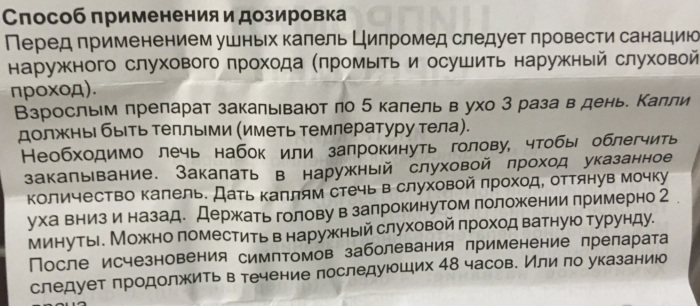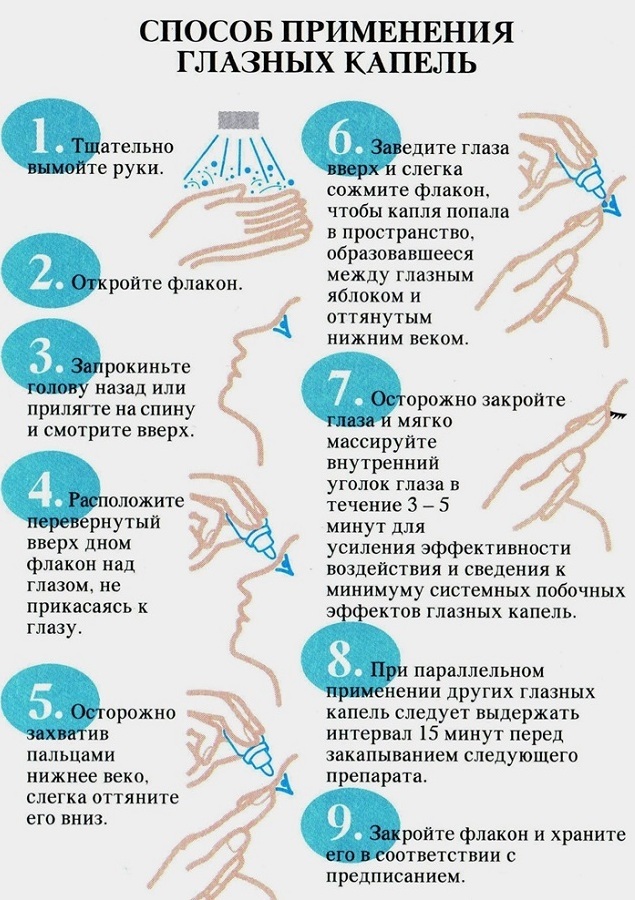If otitis media in an adult or the child is provoked by bacteria, the use of antibiotics is recommended. At the same time, the doctor should select the therapy regimen depending on the sensitivity of the pathogen to the antimicrobial means, the patient's age, whether he has contraindications to this group of drugs, as well as the severity of the clinical paintings.
Record content:
-
1 When antibiotics are needed
- 1.1 With otitis externa
- 1.2 With otitis media
- 1.3 With internal otitis media
-
2 Forms of release of drugs with an antibiotic, pharmacological action
- 2.1 Suspension
- 2.2 Ear drops
- 2.3 Injections
- 2.4 Ointments
-
3 The best antibiotics for otitis media in adults
- 3.1 With acute otitis media
- 3.2 With chronic otitis media
- 3.3 With otitis media
- 3.4 With purulent otitis media
- 3.5 With otitis externa
- 4 Recommendations for taking antibiotics in children
-
5 Preparations for otitis media of varying severity in children
- 5.1 In acute inflammation
- 5.2 With chronic inflammation
- 5.3 With purulent inflammation
- 6 Otitis media treatment video
When antibiotics are needed
Otitis media is an inflammatory process in the ear. Depending on the nature of the pathogen, the disease can be bacterial, viral, fungal and mixed genesis.
If otitis media is caused by viruses, then the appointment of antibiotic therapy in most cases is impractical. But on the other hand, antimicrobial medicines reduce the risk of developing mastoiditis and other dangerous complications. Therefore, whether antibiotics are needed for viral otitis media, the doctor should decide on an individual basis.
When the disease is provoked by fungi, treatment with antimicrobial agents can cause the progression of the pathology and deterioration of the patient's well-being.
It is advisable to prescribe an antibiotic for otitis media in an adult and a child only when bacteria are the causative agent of the pathological process. With this course of the disease, refusal of antibiotic therapy and its untimely prescription can cause brain abscess, sepsis and death of the patient.
But with the wrong prescription of antibiotics for bacterial otitis media, antibiotic resistance may appear. Therefore, it is necessary to take into account which bacteria caused the pathological process, and their sensitivity to a specific antimicrobial agent.
Determining the nature of the disease on your own is quite problematic. Therefore, the diagnosis can only be carried out by an otolaryngologist. If more than 3 days have passed after the appointment of antibiotic therapy and no positive dynamics are observed, then it is recommended to change the medication.
It is also important to complete the course of treatment with an antimicrobial agent, otherwise the disease can become chronic and antibiotic-resistant microorganisms appear.
With otitis externa
Otitis externa is an inflammation of the external auditory canal. For its treatment, antibiotics can be used in tablets, ear drops, in injections that are injected into a vein or muscle.
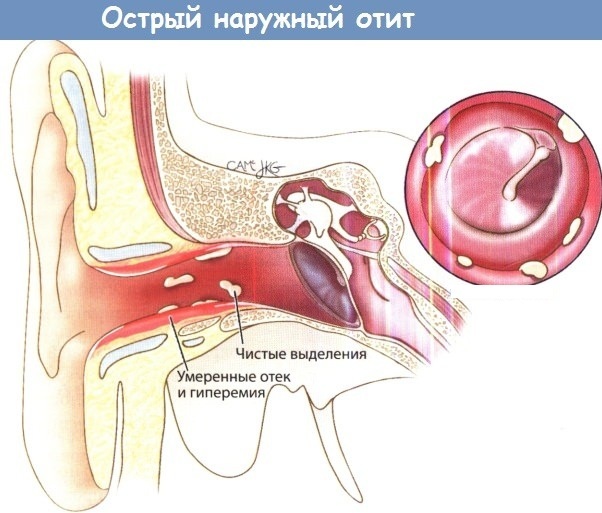
For otitis externa, the following types of antibiotics are prescribed:
- Penicillins. This group includes drugs based on amoxicillin, which are produced under different trade names: Amosin, Flemoxin Solutab, Ekobol. They are contraindicated in case of intolerance to their composition, as well as to cephalosporins and other penicillins. Orally or parenterally, they cannot be used for Filatov's disease, lymphocytic leukemia, severe liver and kidney dysfunction. For the treatment of otitis externa, amoxicillin can be used in combination with clavulanic acid. These are drugs such as Augmentin, Amoxiclav. Clavulanic acid inhibits beta-lactamases - enzymes that destroy amoxicillin, thereby expanding its antibacterial spectrum of action.
- Cephalosporins. They are classified as beta-lactam antibiotics. Compared to penicillins, cephalosporins are more resistant to beta-lactamases. They can not be tolerated with intolerance to their compositions, drugs of the penicillin and cephalosporin series. They should be used with caution in case of liver and kidney dysfunction. For otitis externa, Ceftriaxone, Ceftazidime can be used.
- Macrolides. These are antibiotics that contain a macrocyclic lactone ring. They stop the growth and reproduction of pathogenic microflora, in high doses they have a bactericidal effect. Macrolides include azithromycin (Zitrolide, Zi-factor, Sumamed), clarithromycin (Klabaks, Klacid). The drugs in this group have the lowest toxicity and are well tolerated by most patients. In the treatment with macrolides, there were no cases of nephro- and hematotoxicity, toxic effects on the central nervous system, chondropathy and arthropathy, photoallergies, and some side effects, which occur due to the use of other antibiotics, appear very rarely, including anaphylaxis, severe toxic-allergic syndromes, pseudomembranous colitis. The advantages of azithromycin include the fact that it needs to be taken once a day and the course of treatment with it lasts only 3 days.
Also, antibiotic drops can be used to treat otitis externa:
- Normax. The therapeutic effect of the medication is due to norfloxacin. This is an antimicrobial agent of the fluoroquinolone series, which has a wide spectrum of antibacterial activity. Norfloxacin has a bactericidal effect; microorganisms that are at rest and reproduction are sensitive to it. Normax is notable for its low toxicity. It is impossible with intolerance to the composition of eye drops and other quinolones. It is not recommended for women in position and breastfeeding, for patients under 18 years of age.
-
Ciprofloxacin. This is an antimicrobial agent from the group of fluoroquinolones, which has a broad spectrum of antibacterial action. Ear drops should not be in case of hypersensitivity to their composition, in patients under 15 years of age. Its full analogs are Betacyprol, Tsipromed. The latter drug is not recommended during gestation and breastfeeding.
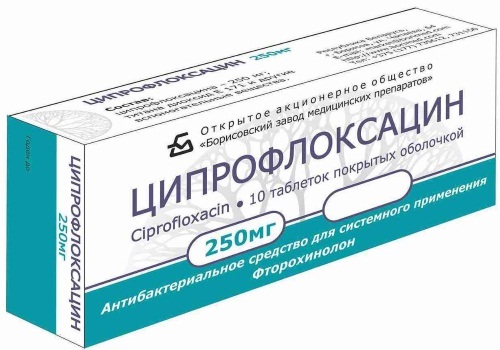
- Otofa. The drug contains rifamycin as an active ingredient. It causes the death of most gram-positive and gram-negative microorganisms. Ear drops should not be used if you are allergic to their composition.
With otitis media
With otitis media, the middle ear and eardrum are involved in the pathological process. Symptoms usually appear within a few hours.
You can suspect the disease by the following symptoms:
- pain in the ear;
- partial hearing loss;
- heat.
If the eardrum has ruptured due to illness, bleeding from the ear canal may be observed and pain may be relieved. An antibiotic for otitis media in an adult or a child is prescribed with the obligatory consideration of the condition of the eardrum.
With otitis media, the same antimicrobial medicines can be used in tablets and injections as for inflammation of the external ear. The drugs of choice are penicillins and cephalosporins. If you are allergic to them, macrolides are prescribed. From ear drops with otitis media, you can Tsipromed.
With inflammation of the middle ear, which is accompanied by persistent perforation of the tympanic membrane, Otofa can be used. The duration of therapy for otitis media can vary from 5 to 10 days. The course of treatment can be increased in patients under 2 years of age, and also if there is discharge from the ear.
With internal otitis media
Otitis media or labyrinthitis is an inflammation of a person's inner ear. This is a serious and dangerous pathology that, without adequate and timely treatment, can cause hearing loss and complications from the central nervous system.
You can suspect otitis media by the following symptoms:
- nausea;
- vomit;
- hearing impairment;
- tinnitus;
- dizziness.
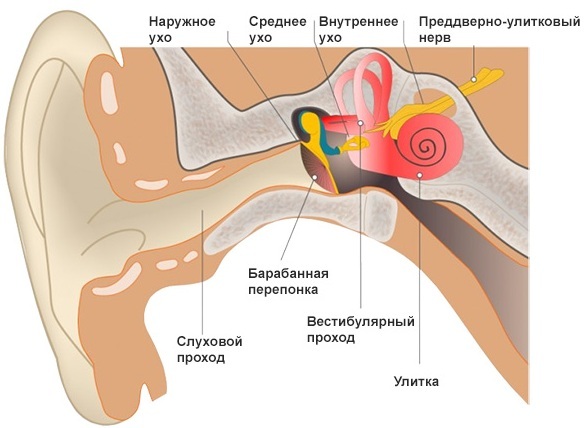
If these symptoms appear, you should not postpone the visit to the doctor. If the doctor confirms the diagnosis of internal otitis media, then the disease should be treated in a hospital setting. With this course of the pathological process, preference should be given to injectable forms of antibiotics. In severe cases, the doctor may prescribe several antibacterial agents at the same time.
For the treatment of otitis media, cephalosporins, macrolides, protected penicillins are used, such as:
- Augmentin, Amoxiclav;
- Azithromycin and its analogs such as Zitrolide, Hemomycin, Zi-factor;
- Ceftraktam, Ceftazidine.
The course of treatment with penicillin and cephalosporin antibiotics for internal otitis media should be at least 10-14 days. The duration of macrolide therapy is 3 days.
Forms of release of drugs with an antibiotic, pharmacological action
Antibiotics for otitis media can be produced in various dosage forms. In what form of release to use the drug depends on the severity of the clinical picture, the age of the patient, and whether the patient can take the medication inside.
Pills
Antibiotics in tablets are recommended for use in patients over 12 years old and in adults with mild and moderate otitis media.
The following medications can be used to treat inflammation:
- Amoxicillin. The drug is on sale under several trade names Amosin, Ospamox, Flemoxin Solutab. The latter two are available in the form of dissolving tablets, which is very convenient for patients who have difficulty swallowing. The antibiotic causes the death of staphylococci, streptococci, gonococci, meningococci, shigella, salmonella, coli Escherichia. But amoxicillin is destroyed by microorganisms that produce beta-lactamase.
-
Augmentin (Amoxiclav, Baktoklav, Panklav). These are combined medicines, which include, in addition to amoxicillin, clavulanic acid. The latter inhibits the activity of beta-lactamases, as a result of which the bactericidal effect of amoxicillin expands, and it causes the death of bacteroids, legionella, nocardia, Whitmore's bacillus.

- Macropen. It contains midecamycin as its main component. It is a macrolide antibiotic that disrupts the growth and reproduction of staphylococci, streptococci, diphtheria bacillus, clostridia, bacteroids, neisseria, helicobacter, moraxella, bordetella.
- Azithromycin. The same types of microorganisms are sensitive to it as to midecamycin, in addition, it also stops the growth of Escherichia coli and Haemophilus influenzae.
- Clarithromycin (Klabaks). This is an antimicrobial agent from the macrolide group, which can have bacteriostatic and bactericidal action in against staphylococci, streptococci, Haemophilus influenzae, Helicobacter pylori, pathogens of Pontiac fever, Moraxelles.
- Cephalexin. This drug belongs to the 1st generation cephalosporins. It causes lysis of staphylococci, streptococci, corynebacteria, clostridia, treponema pale, gonococci, meningococci, proteus, klebsiella, coli Escherichia.
Suspension
An antibiotic for otitis media in an adult is most often used in tablet form. For small children who cannot take antibiotics in tablets, preparations in suspension are recommended.
The following medications can be given at a suitable dosage from birth:
- Amoxicillin;
- Macropen;
- Augmentin, Amoxiclav;
- Cephalexin;
- Azithromycin (Sumamed, Hemomycin).
Children over six months can be given Suprax suspension. It contains the 3rd generation antibiotic cephalosporin cefixime as the main component. It is distinguished by a wide spectrum of action, it causes the death of streptococci, salmonella, shigella, gonococcus, hemophilus influenzae, protea, moraxella, klebsiella. But staphylococci are insensitive to the drug.
Ear drops
Antibiotic ear drops are effective in treating otitis externa and otitis media. The following medications can be used to treat inflammation:
| Name | Description |
Sofradex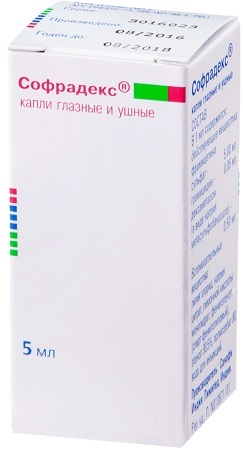
|
The drug contains 2 antibiotics: framycetin sulfate and gramicidin. Staphylococcus aureus, Proteus, E. coli and dysentery bacillus are sensitive to the drug. Also, the medication includes dexamethasone, which relieves inflammation. |
| Polydexa | These are combination ear drops that contain the antibiotics polymyxin and neomycin. The drug acts on Staphylococcus aureus, Klebsiella, E. coli and Haemophilus influenzae, pseudomonas. In addition to them, Polydex ear drops contain dexamethasone. |
Injections
With internal otitis media and severe infection, injection forms are used. For treatment, Amoxiclav can be used and its analogues are produced in powder, from which a solution is prepared for intravenous administration.
Cephalosporins can also be used in injections. In case of intolerance to penicillin and cephalosporin antibiotics, macrolides (Azithromycin) are prescribed.
Ointments
Ointments can only be used for inflammation of the outer ear, they should not be placed in the ear canal. The pharmaceutical industry does not produce drugs in the form of an ointment, which are used specifically for the treatment of otitis media.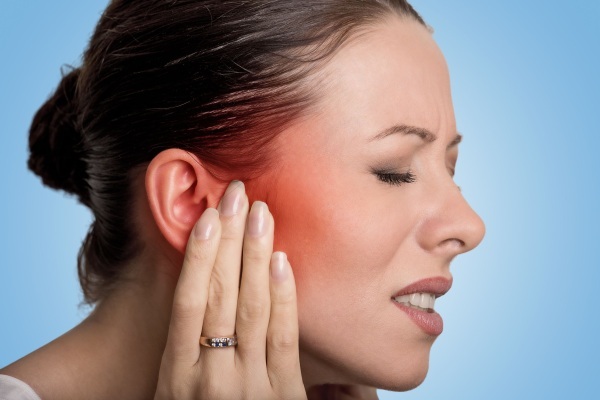
But the doctor can prescribe Levomekol to apply it to the outer part of the auricle. The preparation contains the antibiotic chlorahemicol, to which staphylococci, Pseudomonas aeruginosa, Escherichia coli are sensitive.
The best antibiotics for otitis media in adults
An antibiotic for otitis media in an adult is selected depending on the therapy regimen, the severity of the infection and the sensitivity of microorganisms.
With acute otitis media
When signs of infection appear, it is necessary to determine which pathogen is the cause of the disease. If there is secretion, then it is necessary to inoculate the microorganism on a nutrient medium and determine its sensitivity to the antibiotic. The drugs of choice for otitis media are penicillins and cephalosporins, when their intolerance is observed, macrolides are recommended.
If they are ineffective, fluoroquinolones can be prescribed, which are reserve funds.
With chronic otitis media
Due to improper treatment of acute otitis media, the disease can become chronic. In this case, before starting therapy, it is necessary to identify the causative agent of the disease and determine which antimicrobial agent they are sensitive to. If the antibiotic is not prescribed correctly, resistant microorganisms can appear.
With otitis media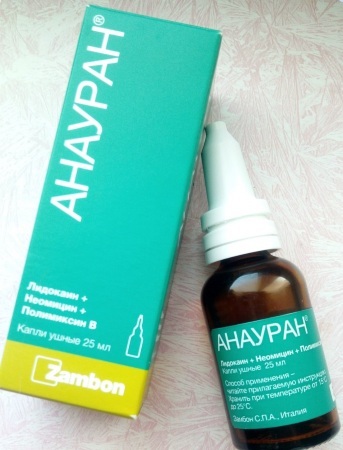
For otitis media, Anauran can be used. This is a combination product that contains neomycin sulfate and polymyxin B.
In addition to these antibiotics, the drug contains lidocaine, which relieves pain and itching.
The medicine is available in ear drops that can be instilled with otitis media without perforation of the tympanic membrane.
It cannot be used in case of hypersensitivity to the composition of the medication. Anauran can be used by pregnant and lactating women, children of any age.
With purulent otitis media
With purulent otitis media, the drugs of choice are also penicillins and cephalosporins, but for the effectiveness of therapy, it is recommended to prescribe 2-3 antibiotics at the same time.
Macrolides may be included in the treatment regimen. Purulent otitis media should always be treated in a hospital setting. It is necessary to evaluate the effectiveness of antibiotic therapy every 72 hours; in the absence of positive dynamics, the therapy regimen is changed.
With otitis externa
For otitis externa in adults, ear drops can be used:
-
Sofradex. The drug should not be used if the integrity of the tympanic membrane is violated, since in this case it can cause ototoxicity. It is forbidden to use it in case of allergy to its components, during pregnancy and lactation. Sofradex is prohibited for infants.

- Polydexa. Ear drops should not be in case of intolerance to their composition, mycosis and viral diseases of the ears. They are contraindicated in women in position and breastfeeding. They cannot be used if the tympanic membrane is damaged, as in this case, hearing impairment may occur.
Any antibiotic for otitis media in the form of drops can cause allergies, which requires their cancellation.
Recommendations for taking antibiotics in children
In children, otitis media progresses very quickly and can cause severe complications.
That is why in case of inflammation of the child's ear, it is imperative to show the doctor and it is advisable to treat the disease in a hospital setting, especially when the patient's age is under 2 years old.
It is imperative to prescribe antibiotics if the patient has the following abnormalities:
- discharge of pus from the ear;
- immunodeficiencies of various origins;
- high temperature for several days;
- inflammation of the regional lymph nodes;
- chronic course of pathology;
- there are signs of a bacterial infection;
- a strong increase in leukocytes in the blood.
Antibiotics for otitis media must be prescribed when the child is not yet 2 years old. The doctor should select the drug taking into account the patient's age, the presence of concomitant diseases, the patient's body response to antibiotic therapy and the sensitivity of the pathogen to a specific antimicrobial the drug.
Preparations for otitis media of varying severity in children
For children, an antibiotic for otitis media is selected individually.
In acute inflammation
To find a drug, you need to identify which bacteria caused the disease. When this is not possible, broad-spectrum medications are prescribed. For children, the drugs of choice are penicillins and cephalosporins. When, for whatever reason, they are contraindicated, macrolides are recommended.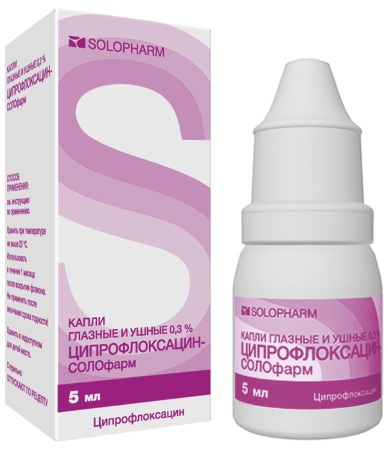
Because of the risk of adverse reactions, fluoroquinolones should not be taken orally by children, but they can be used in the form of ear drops.
For example, Ciprofloxacin-SOLOpharm can be used to treat otitis externa in a child.
With chronic inflammation
In chronic otitis media, cephalosporins, penicillins, macrolides are also used.
But if with acute inflammation of the ear, the duration of treatment is usually 7-14 days, then in the chronic course of the disease, the course of therapy lasts up to 21 days.
With purulent inflammation
If pus is discharged from the child's ear, be sure to show the doctor. The disease cannot be treated at home, as it can cause meningitis, blood poisoning and death. With this course of the disease, children, like adults, are prescribed several antibacterial agents.
Regardless of the form and severity of otitis media, the use of antibiotics in both children and adults requires special care. At the same time, it is strictly forbidden to use them without a doctor's prescription, and therefore, the dispensing of this category of drugs in pharmacies is made only by prescription.
Article design: Vladimir the Great
Otitis media treatment video
Malysheva will talk about the treatment of otitis media:

